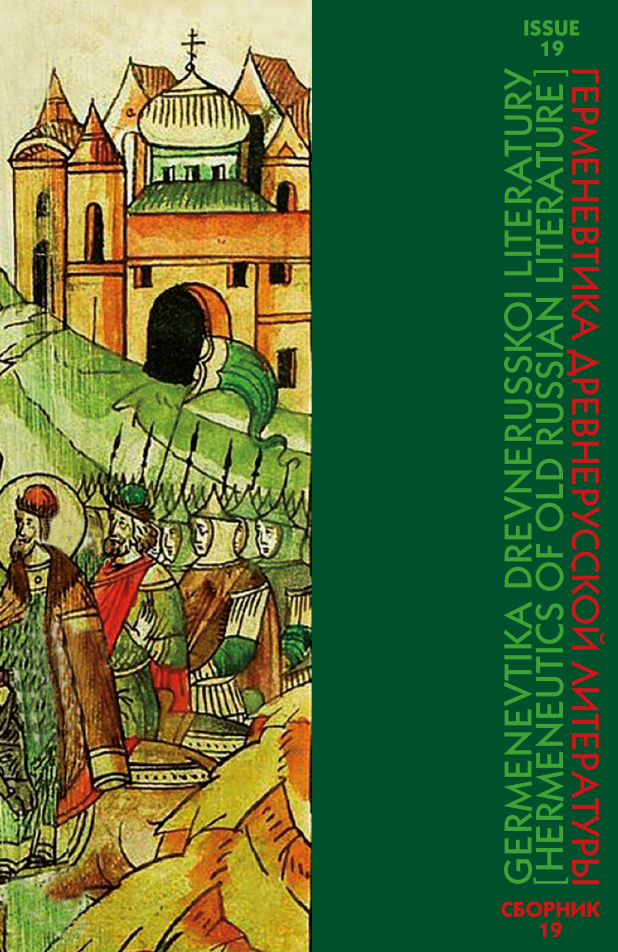Abstract: The article explores the comparative analysis of Slavic concepts of succession from Rome and Constantinople. Some researchers argued about the direct relationship of the Russian language from Bulgarian. Despite the fact that this hypothesis is recognized as untenable, in both concepts are similar ideas. This article is devoted to the analysis of the General and special in the Slavic concepts of Empire transfer.
References:
1 Perevezentsev S.V. Tainy russkoi very. Ot iazychestva k imperii [Secrets of Russian faith. From paganism to the Empire]. Moscow, Veche Publ., 2001. 432 p. (In Russian).
2 Polyviannyi D.I. Kul’turnoe svoeobrazie srednevekovoi Bolgarii v kontekste vizantiisko-slavianskoi obshchnosti IX–XV vekov [The Cultural Identity of Medieval Bulgaria in the Context of the Byzantine-Slav Community (9th–15th Centuries)]. Ivanovo, Ivanovskii gosudarstvennyi universitet Publ., 2000. 290 p. (In Russian).
3 Poslaniia startsa Filofeia [Elder Philotheus’s letters]. Biblioteka literatury Drevnei Rusi [Library of Old Russian literature]. St. Petersburg, Nauka Publ., 2000, vol. 9, pp. 290–306. (In Russian).
4 Radoiichich G.S. Pandekhovo skazanie 1259 g. (O Vizantii, tatarakh, kumanakh, russkikh, vengrakh, serbakh, bolgarakh) [Pandekh’s legend of 1259 (About Byzantine Empire, Tatars, Cumans, Russians, Hungarians, Serbs, Bulgarians)]. Trudu Otdela drevnerusskoi literatury [Researchers of the Department of Old Russian literature]. Moscow, Leningrad, Izdatel`stvo AN Publ., 1960, vol. 16, pp. 161–166. (In Russian).
5 Sinitsyna N.V. Tretii Rim [The Third Rome]. Moscow, Indrik Publ., 1998. 416 p. (In Russian).
6 Solunskaia legenda [The Legend of Solun]. Lavrov P.A. Materialy po istorii vozniknoveniia drevneishei slavianskoi pis’mennosti [Materials on the history of the ancient Slavic writing]. Leningrad, AN SSSR Publ., 1930, pp. 158–159. (In Russian).
7 Stremoukhov D.N. Moskva — Tretii Rim. Istochnik doktriny [Moscow the Third Rome: Sources of the Doctrine]. Iz istorii russkoi kul’tury [From the history of Russian culture]. Moscow, Iazyki slavianskoi kul’tury Publ., 2002, vol. 2, book 1: Kievskaia i Moskovskaia Rus’, pp. 425–441. (In Russian).
8 Usachev A.S. Tretii Rim ili Tretii Kiev? (Moskovskoe tsarstvo XVI v. v vospriiatii sovremennikov) [The third Rome or the Third Kiev? (Muscovy of the 16th century in the perception of contemporaries)]. Obshchestvennye nauki i sovremennost’, 2012, no 1, pp. 69–87. (In Russian)
9 Kaimakamova M. Vlast i istoriia v B”lgariia v kraia na XII i prez XIII v. [Power and history in Bulgaria at the end of 12th and during the 13th century]. Zbornik radova Vizantoloshkog instituta, 2010, no 47, pp. 215–244. (In Bulgarian)






